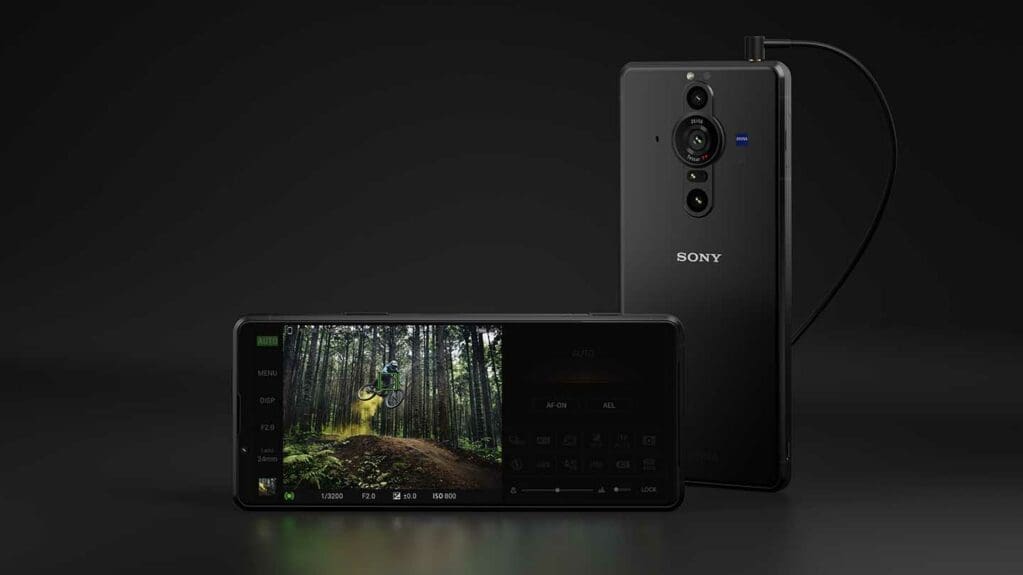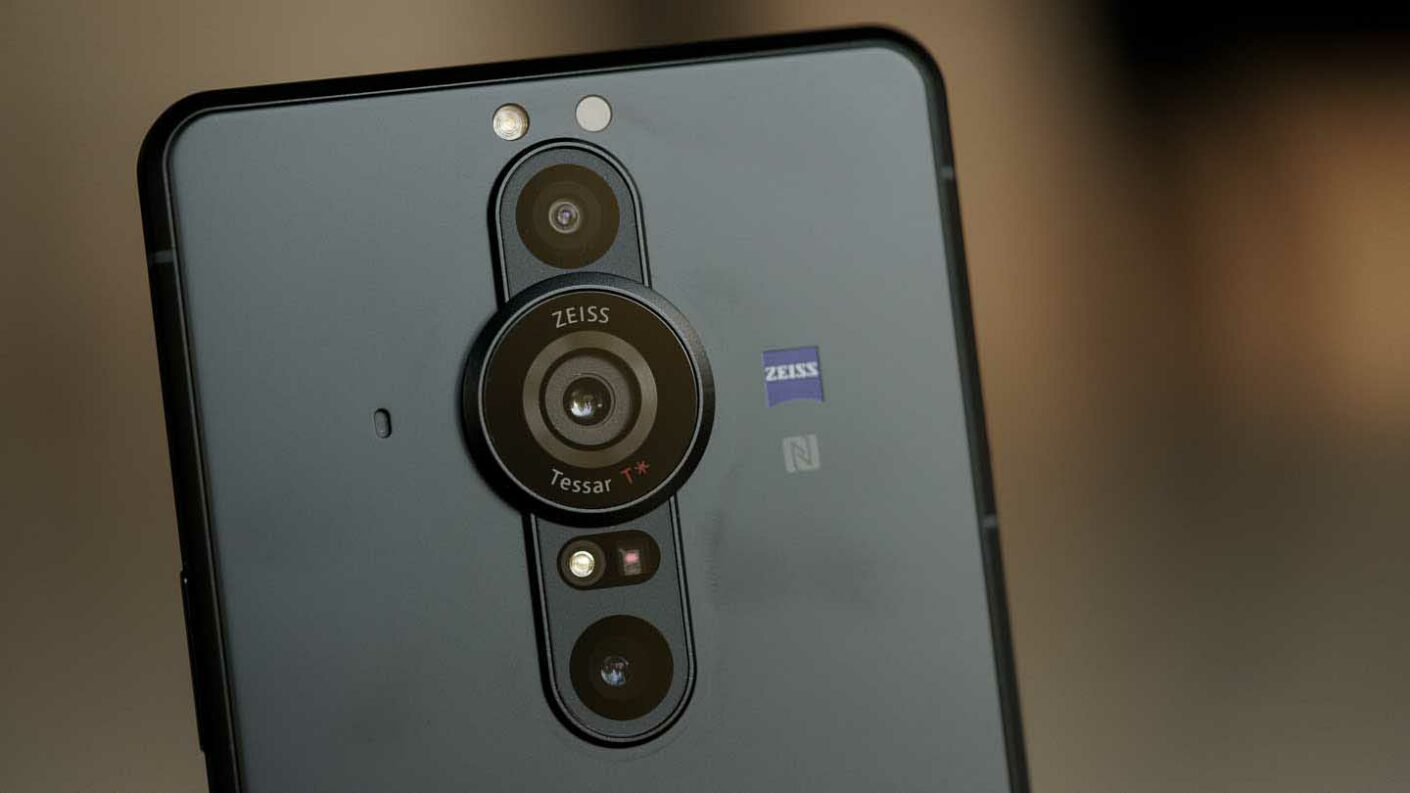If you’re wondering, the ‘I’ in Sony Xperia Pro-I stands for imaging. That’s to indicate that although the Xperia Pro-I is a smartphone, it has been created with photography and photographers in mind. With the possible exception of wireless charging, it offers all the features that you’d expect with a modern smartphone plus some great technology inherited from Sony’s dedicated camera range.
Our Verdict
It commands a heck of a price but the Sony Xperia Pro-I is a heck of a smartphone. You get a level of control over the camera settings that is not seen with most other smartphones and its phase detection focusing puts in a great performance. It also delivers high-quality results, especially when the 24mm camera is used.
If you’re looking for a camera that you can slip in the back pocket of your jeans then the Sony Xperia Pro-I fits the bill very nicely if you can stomach the price.
For
- Excellent image and video quality
- Plenty of control
- Superb AF performance
Against
- High cost
- No shutter button icon in Photo Pro mode
What is the Sony Xperia Pro-I?
Specification
- Product type: Smartphone
- Platform: Android
- Rear camera system: Triple-camera
- Rear cameras and lenses: 12Mp 24mm f/2.0 or f/4.0 with 1-inch type Exmor RS sensor, 12Mp 16mm f/2.2 with 1/2.5-inch type Exmor RS for mobile sensor and 12Mp 50mm f/2.4 with 1/2.9-inch type Exmor RS for mobile sensor
- Image format: Jpeg, DNG raw
- Front (selfie) camera: 8Mp f/2 with 1/4-inch type sensor
- Screen: 6.5-inch 21:9 4K (3840 x 1644) HDR OLED CinemaWide
- Video : 4K HDR video at 24, 25, 60 and 120fps with 24mm camera
- Storage: 512GB internal memory, microSDXC support (up to 1TB)
- Display: 6.5-inch 21:9 4K HDR OLED (3840 x 1644)
- Battery: 4500mAh
- USB type: USB-C
- Dimensions: 166 x 72 x 8.9mm
- Weight: 211g
Sony Xperia Pro-I price
At launch the Sony Xperia Pro-I is priced at £1,599/$1,799. It can also be bought with Sony’s GP-VPT2BT Shooting Grip for $ 1,886 or with the grip and the Sony Vlog monitor for $2,034.
Features
Sony has given the Xperia Pro-I a triple camera system that covers the focal length equivalents of 16mm, 24mm and 50mm. The big news is that according to Sony, the 24mm camera has the same 1-inch type Exmor RS BSI CMOS sensor as the Sony RX 100 VII. However, the RX100 VII has a resolution of 20Mp whereas the Xperia Pro-I’s 24mm camera sensor outputs 12Mp images. This suggests that the phone only uses a section of the sensor or there’s some pixel-binning going on. Nevertheless, the Xperia Pro-I’s 24mm camera sensor has a pixel pitch of 2.4μm, which is significantly larger than that of most other smartphones.
Those larger pixels give the Sony Xperia Pro-I an advantage for image quality. The larger sensor also means that backgrounds can be rendered soft naturally, aided by the ability to switch between an aperture of f/4.0 and f/2.0.
This camera is coupled with a 16mm equivalent f/2.2 camera with a 1/2.5-inch type sensor and a 50mm f/2.4 camera with a 1/2.9-inch type sensor – both with 12Mp resolution.
You also get phase-detection focusing, Sony’s Real-time Eye AF for humans and animals, and Real-time Tracking with all three of the cameras. Plus there’s 20fps shooting with continuous AF and metering with the 24mm camera and 10fps with the 16mm and 50mm cameras.
In addition, 4K video can be shot at up to 120fps with the 24mm camera and both the 24mm and 50mm cameras have Optical SteadyShot stabilisation for stills and video while the 16mm camera has electronic stabilisation.
Sony supplies the Xperia Pro-I with the Photo Pro app installed to facilitate shooting stills while video can be shot using either the Video Pro or Cinema Pro apps. Video Pro gives a good level of control but Cinema Pro is provided for more professional work.
Although the Sony Xperia Pro-I has 512GB of internal storage, it has a microSD card port that can accept cards of up to 1TB capacity.

Build and handling
With dimensions of 166 x 72 x 8.9mm, the Sony Xperia Pro-I is quite long and slim in comparison with the Apple iPhone 13 Pro. Its matt black finish also looks sleek and sophisticated while the ridged edges give a little grip – although I’d still be inclined to use the strap loop to attach a wrist strap to keep it safe.
The 10-bit HDR OLED screen measures 6.5-inches across the diagonal, has an aspect ratio of 21:9 and 4K (3840 x 1644) resolution. It combines to give s fantastically sharp and detailed view of the scene and captured images, however, there were a few times when I would have liked it to be a bit brighter.
While all the camera settings are selected and adjusted via the screen, the Xperia Pro-I has a physical shutter button. This feels a bit spongy in comparison with a traditional camera, and the half-press point is less distinct, but it performs well once you’re used to it.
Photo Pro has Basic setting that allows the Xperia Pro-I camera to be used as a point-and-shoot model, plus there are Auto and Program modes that gives you a bit more control, but most of the smartphone’s target audience are going to be interested in the shutter priority and manual exposure modes to get the full range of controls. Tapping the mode icon in the top left of the screen brings up the exposure mode options for selection.
If the Photo Pro app is open on the Xperia Pro-I, pressing the button next to the shutter release switches to the Video Pro app. However, pressing it again doesn’t return you to Photo Pro, at least on the sample I have (which is running the latest firmware). Instead, you have to go to the home screen and reopen Photo Pro, which seems rather odd.
In other respects, the Xperia Pro-I is easy to use with all the parameters and settings being easy to find in the Photo Pro, Video Pro and Cinema Pro apps.
Performance
There’s no doubt that the 24mm camera produces the best results from the Xperia Pro-I with the f/2.0 maximum aperture helping to keep the sensitivity (ISO) level down as light levels fall. The larger pixels of this camera’s sensor also help keep the images a little cleaner than the other cameras as the ISO value rises. Nevertheless, even with the 24mm camera, it’s worth keeping the ISO below 1000 as the shadows start to look noisy even on the phone’s screen.
At low ISO settings, the Xperia Pro-I produces great-looking Jpegs with nicely balanced exposure and natural colours. However, as we’ve seen before with smartphones, the sharpening is a little high in some situations. This isn’t an issue if you only view images at phone-screen size, but if you want to look at the images on a larger screen, some details may look a bit over-defined, but not as much as with the iPhone 13 Pro.
Simultaneously captured DNG raw files often look a bit flat and washed out in comparison with the Jpegs, so you need to do a bit of work post-captured to get the results you want. However, this brings the opportunity to apply a bespoke level of sharpening.
Even when the 16mm lens is in use, distortion is controlled well and there’s no need to worry about straight line bowing.
Flare and chromatic aberration are also kept in good check whichever camera you use on the Xperia Pro-I, but as you’d expect, you need to take a bit more care with the position of the sun when the 16mm lens is in use.
One of the key selling points of the Xperia Pro-I is its use of phase detection focusing and its ability to detect and focus on eyes in the frame. It’s certainly very quick to spot human and animal (dog and cat) faces in the frame, and if the eyes are straight-on, it spots them quickly too – although it can miss them if the subject is wearing a hat.
Impressively, even in the low light of a woodland during an overcast mid-winter afternoon, the Xperia Pro-I was able to focus on my dog and keep up with him as he raced around.
Sony Xperia Pro-I sample images
Follow the link to browse and download full-resolution images from the Sony Xperia Pro-I.
[FAG id=1391264]
Sony Xperia Pro-I sample video
These video clips where shot in 4K (3840 x 2160) resolution using the 24mm camera. The first three clips were in 25p but the last one was shot at 120p for slow motion playback.
Verdict
The Sony Xperia Pro-I’s camera is overkill for the vast majority of smartphone users, but it’s an excellent choice for photographers and videographers. However, if you’re looking for a smartphone for capturing snapshots when you can’t be bothered to use a ‘proper’ camera, the Xperia Pro-I probably isn’t the right phone for you. Yes, it has fully automatic shooting options, but you’d be paying a lot of money for a point-and-shoot camera – even a very clever one.
The Xperia Pro-I’s power comes from a combination of its camera hardware, Sony’s technology and the software that pulls them together. It can focus quickly and silently, keeping a moving subject sharp while shooting at 10 or 20fps (depending upon the active camera) and provided the sensitivity is kept below around ISO 1000, it delivers very high quality images and video.




